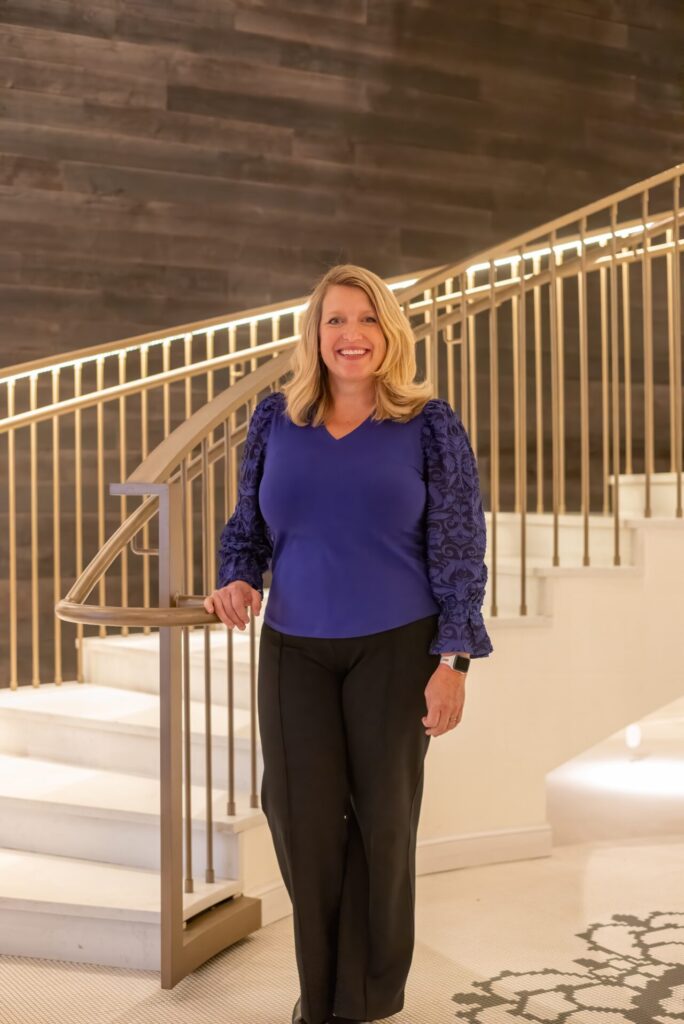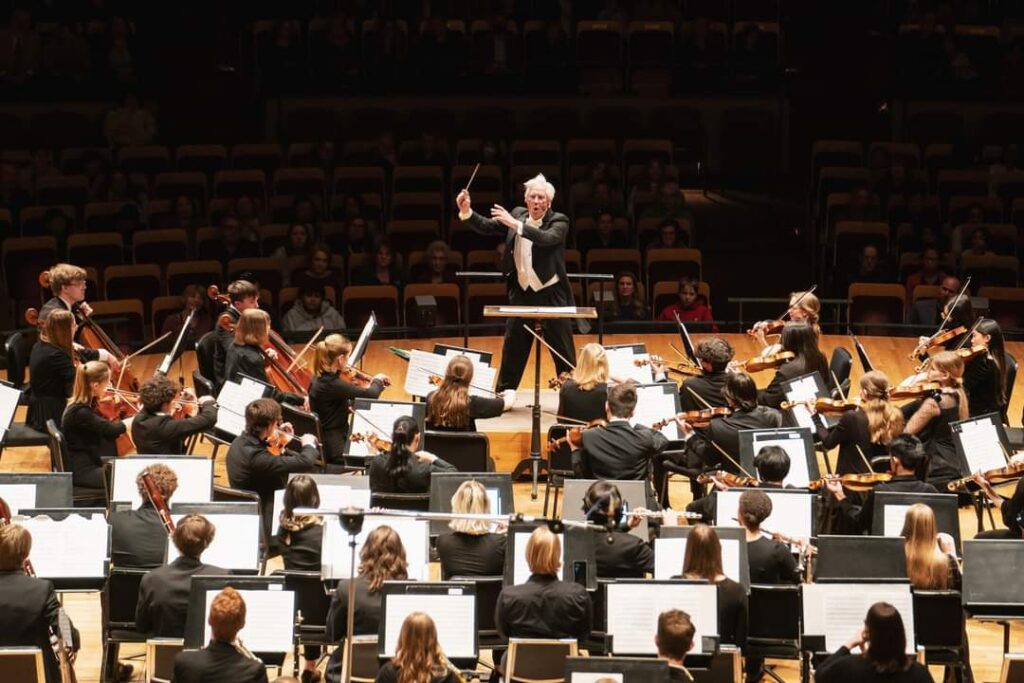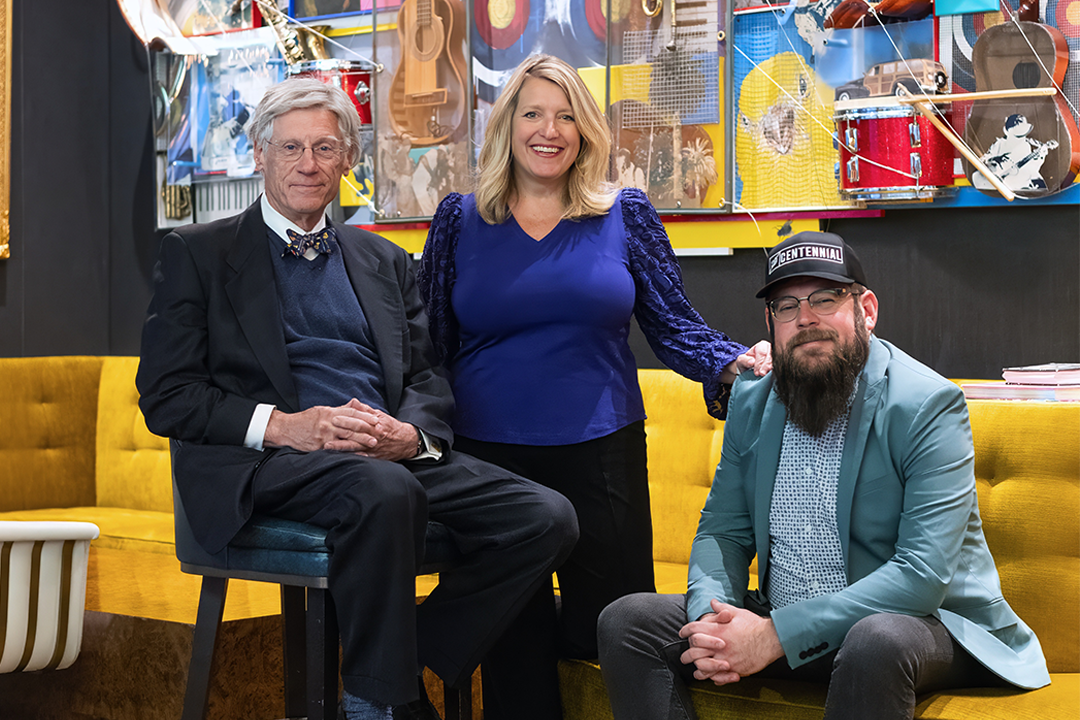Brian Seifried – President, Centennial Hospitality Group
Wing Shack, Luna’s Tacos & Tequila, Sexy Sammies, The Centennial Public House
Brian Seifried spent his early 20s tossing wings 12 hours a day. In the summer, the tiny kitchen reached a blistering 110°F and was filled with a thick, greasy smoke. Every night, he trudged up the stairs, exhausted, to the apartment above the restaurant that he shared with his brother.
But it was worth it. The restaurant was theirs. They called it Wing Shack.
They opened their doors in 2004, just a few years after Seifried moved up from Westminster to attend Colorado State University. He’d been working at Jim’s Wings and found himself more interested in the restaurant business than his classes.
The Seifried brothers wanted to do wings their way, which meant concocting their own sauces and finding a restaurant space. They borrowed money from their parents and a friend and settled on a tiny shack in Garden City—the very shack that inspired the name.
Their rent was $750 per month for the restaurant and $450 for the apartment upstairs. They pulled the whole thing off for less than $30,000.
“It was a lot of duct tape and good karma,” Seifried says and laughs. “The shack was really shack-y. It started out really scrappy.”

Brian Seifried photographed inside the Magic Rat located at The Elizabeth Hotel in Fort Collins. Photo by Jordan Secher.
The very first Wing Shack, located at 2704 8th Ave., still operates out of the tiny space today after 20 years in business. It’s one of 15 restaurants Seifried owns and operates in Northern Colorado with two new partners, plus a sauce kitchen, food truck and food trailer.
Most of those are other Wing Shacks. Just a couple years after the business was born, the brothers opened a second location in Loveland. Fast forward to 2012, and two more Wing Shacks popped up in Windsor and west Greeley. Seifried and his team opened another location in Fort Collins in 2016, and they jumped the border to Cheyenne, Wyo., in 2017.
It was around that time that a historic building became available in Downtown Greeley, and Seifried had the idea to try his hand at Mexican food. He wanted to prove to himself that he could do more than cook wings in oil and toss them in hot sauce. He had always loved Mexican food and a good margarita.
His team encouraged the idea, partially because they had a system that worked at Wing Shack and wanted him out of their hair. The project involved gutting and redesigning the 120-year-old building to transform it into Luna’s Tacos & Tequila, along with traveling to San Francisco to research modern Mexican-American cuisine. Luna’s is now one of Greeley’s most popular gathering spots, offering gourmet street tacos, short rib nachos, spicy guacamole and other elevated Mexican fare.

Brian tossing wings at the Fort Collins Wing Shack, 1011 South Lemay, in 2016.
A little over a year after Luna’s opened, COVID temporarily closed it, and all the Wing Shacks shifted to take-out only.
“At Luna’s, we had been getting ready for the St. Patrick’s Parade in Downtown Greeley, and our chef had made 50 to 100 pounds of this really tasty corned lengua,” Seifried says. “I ended up with all this corned lengua in my fridge, and my son and I were just pounding it.”
When the coast was clear to reopen, Seifried’s restaurants resumed normal operations. But he never took a break. He’d opened a Wing Shack in Longmont and another in Greeley by the end of 2020, and he was entertaining another chicken-related concept.
“I ended up getting really focused on chicken tenders,” Seifried says. “The family had the FryDaddies in the garage, and we were making sandwiches with these all-natural, hand-breaded chicken tenders. We thought they were pretty sexy.”
The idea was to sell the sandwiches out of the back door of a Wing Shack, but there wasn’t enough room. Luckily, the space next to the third Greeley location became available, so Seifried decided to give it a go in 2021. The concept took off, and he was able to open a second location near the University of Northern Colorado campus the following year. The sandwich shop is aptly named “Sexy Sammies.”
Then another historic building became available across from Luna’s, and Seifried’s wheels began turning again. He had the idea to combine traditional pub food—think shepherd’s pie and fish and chips—with American comfort food and craft cocktails. The result was The Centennial Public House, which opened last summer.
Seifried says the different restaurant concepts are an outlet for him and his team to be creative, which has led to more opportunities for growth. Several other Wing Shacks have opened in the last few years (including one in Boulder), and the second Luna’s is set to open at the former Howlers & Growlers location in Windsor this spring. As his restaurants expand and new concepts emerge, Seifried says the only other business partner he’d consider bringing on would be his team via employee ownership.
However, he doesn’t have plans to expand his restaurants far beyond Northern Colorado. He and his team live, work and play here, and he loves being a part of the region’s growing independent restaurant community.
“Hopefully we can continue to be a positive influence in our community and an inspiration to other businesses,” he says. “I have this dream that Northern Colorado becomes this foodie mecca that entrepreneurs are attracted to, like this is where you come to open new, interesting restaurants, and it has a vibe of support. It would be my dream to inspire other young entrepreneurs to dive in and take the leap.”

Joy Sullivan photographed at The Elizabeth Hotel in Fort Collins. Photo by Jordan Secher.
Joy Sullivan – President & CEO, United Way of Larimer County
When the CEO position became available at United Way of Larimer County in the summer of 2020, Joy Sullivan didn’t want to apply. She, like many others in the helping profession, felt burnt out during the pandemic. At the time, she was executive director of The Family Center/La Familia, a nonprofit serving the local Latine (formerly referred to as Latinx) community with childcare and family support. She had also finished grad school, started a consulting business and come out as gay, all while raising three kids as a new divorcee.
Others encouraged Sullivan to apply, and eventually she did. She got the job. Now, three-and-a-half years into it, she’s glad she did. But, as another nonprofit leader with pale skin, blonde hair and blue eyes, she’s made it her mission to empower leaders in marginalized communities to enact change from the inside.
The revelation that she, a white woman, wasn’t the best person to head up nonprofits serving people of color was something she came to terms with years into her career.
Sullivan, a lifelong Coloradoan, graduated from Colorado State University in 1997 with a bachelor’s degree in Human Development and Family Studies and entered the healthcare field as a social worker. That role got her in trouble.
“I was told, ‘Don’t be calling legislators to change laws. Just see your patients, do your charting and go home,’ and I’m like, ‘But I’ve had three patients come in with really expensive and horrible things happen that could have been prevented with a policy change, so of course I’m going to pick up the phone and call the person who can do something about it,’” she says. “That’s where, at a pretty young age, I was like, ‘I think I belong in policy and systems work.’”

Joy during her time with The Family Center/La Familia.
One thing Sullivan was determined to change was legislation around tobacco use. Her parents smoked cigarettes, and she hated it. So, she volunteered on the Alliance for Smoke-Free Kids and Communities Coalition and took a position at the Larimer County Health Department, where she worked on the 2003 ordinance to keep Fort Collins smoke-free. That led to her involvement with the Colorado Clean Indoor Air Act and Amendment 35, which raised the tax on tobacco products to help fund public health programs.
During her time with the health department, Sullivan began understanding the health disparities facing people of different races and ethnicities. She knew enough Spanish to take on the task of educating the Latine community about tobacco prevention. Through that role, she helped launch a coalition called Vida Sana, which was made up of mostly Latine individuals and organizations that supported them, like La Familia.
The coalition was focused on healthy eating, active living and addressing infrastructure flaws. Sullivan uses the North College Avenue corridor as an example: Latina moms would push their strollers along the median because there were no sidewalks, and kids would run across the street from Poudre Valley mobile home park to King Soopers because there were no crosswalks. Ironically, a lot of the funding for Vida Sana to help solve these issues came from the tobacco tax she helped pass.
Sullivan spent the next handful of years working with the Poudre Valley Hospital Foundation (which is now UCHealth) on programs surrounding healthy eating, active living and mental health for kids in the Poudre School District. She brought Vida Sana with her, and while she was there, she wrote a proposal to train members of disproportionately impacted communities as “promotoras” (also known as “community health workers”) to become health resource navigators.
In 2017, the executive director position at La Familia opened up, and Sullivan knew she’d be a good fit. She’d served on the board of La Familia for seven years in the early 2000s and was the board president when they campaigned for the current building on Hickory Street. She got the job and brought Vida Sana with her yet again. She thinks La Familia is where the coalition should have been all along. There, it was renamed “Mi Voz,” meaning “My Voice,” due to its emphasis on advocacy.
“I went through a big learning journey in my three years at La Familia,” Sullivan says. “Spanish-speaking immigrant families would walk in the door and want to speak to the director, and I’d come out from behind the curtain, and they’d be like, ‘Really, you?’ So I started to think, ‘What role should I be playing?’ It was really illuminated to me: fundraising.”
She had stepped down from her role before the pandemic and returned for a short time to write grants and fundraise for the center while starting a consulting business with her new wife, Dr. Molly Gutilla, a professor of public health at CSU. Sullivan was then replaced by Gloria Kat, the first Latina to assume the executive director position at La Familia. Kat still leads the organization today.
When Sullivan became CEO of United Way of Larimer County, her first order of business was increasing the organization’s advocacy work. She knew United Way had the potential to be a powerhouse of support for other nonprofit leaders impacted by the inequities their organizations address.
She also knew that United Way was trying to “spread a small container of frosting on a large sheet cake.” It was her job to narrow the focus—or make the cake smaller—until the organization had more resources (a bigger container of frosting). She and other nonprofit leaders determined that childcare for low-income families in Larimer County was an important piece of the cake.
A big example of Sullivan’s advocacy and fundraising efforts with United Way is the recent transformation of Loveland’s New Vision Charter School building into a new childcare facility for Teaching Tree Early Childhood Learning Center, called the Loveland Youth Campus. United Way fundraised alongside Boys & Girls Clubs of Larimer County to help them purchase the building, and they made plans to turn the second floor into an affordable, collaborative space for community-led nonprofits. The facility is a result of what Sullivan calls the “liberatory side of the work.”
“We still need food banks and coat drives,” she says, “but sometimes, we just need to get out of the way.”
Many know Sullivan by her birth name, “Deirdre,” which translates to “sorrow.” She thought about changing her name for years, partially because no one could pronounce or spell it, but also because she didn’t identify as a sorrowful person. Last July, she finally did it. Now she reflects on all the transformation she’s gone through, both personally and professionally, with Joy.

Wes Kenney photographed inside the Magic Rat located at The Elizabeth Hotel in Fort Collins. Photo by Jordan Secher.
Wes Kenney – Music Director & Conductor, Fort Collins Symphony
Retired Director of Orchestras at Colorado State University
Wes Kenney was a 6-year-old boy living in the Bronx when his father took him to see the original production of “The Music Man” on Broadway in 1961. He met Robert Preston, Shirley Jones and all the other performers, and they gave him the vinyl cast album. He played “Seventy-Six Trombones” until the record wore out.
Captivated by the sound of brass instruments, Kenney jumped at the chance to try the trombone when his third grade teacher told the class they had a variety of instruments for them to play. He was too small to reach the last position of the slide, but that didn’t stop him. In fact, that was just the beginning of his musical career.
He started playing in groups, including his elementary school orchestra. When he got to middle school, he began to notice the person on the podium waving their arms.
“I really didn’t think about conducting until I was in a middle school honor band for the summer,” Kenney says. “At the end of the two-week session, the conductor said, ‘Does anyone want to come up here and try your hand?’ I got up there and did some conducting and thought, ‘Wow this is fun!’”
Kenney continued playing trombone throughout high school, and he knew he wanted to continue studying music after graduation. But rather than jumping right into college, he moved to Vienna, Austria, for a year. Vienna considers itself the music capital of the world, he says, and he was excited to immerse himself in the opera. He once went to the Vienna State Opera 17 nights in a row and never saw the same thing twice.
When he returned, he went to the University of Southern California and got a bachelor’s degree in music history. He tried three times to get into the master’s program for conducting at USC, but life had other plans. He decided to sign up for the Conductors Institute, a four-week summer program at the University of South Carolina, where he met his wife in 1988. She was a professional musician, and she, too, was a USC grad. The two had never crossed paths.

Wes conducting the Denver Young Artists Orchestra.
Kenney spent many years conducting youth orchestras in Los Angeles and went on to get his master’s degree in conducting at San Francisco State University in 1992. Over the next decade, he had jobs as the director of music at a Presbyterian church, associate conductor of the Virginia Symphony Orchestra and director of orchestras at William & Mary college.
Then a joint position between CSU and the Fort Collins Symphony opened in 2003. Kenney applied and was hired. He put down roots as a musician, skier, hiker and lover of the outdoors. He even came up with something he calls the “Colorado 36.”
“You get up in the morning and go up to Loveland Ski Area right as the lifts open,” he says. “You ski 18 runs, then you come down the hill and play 18 holes of golf.”
CSU’s Griffin Concert Hall opened the year after Kenney was hired, and the rest of the University Center for the Arts (UCA) opened in 2008. He credits the UCA for elevating CSU’s music programs to match the level of other major colleges in the state. The current faculty is world-beating, he says, and the students themselves are fantastic musicians.
Kenney says his tenure with the Fort Collins Symphony has been one of the great joys of his life. He’s conducted pieces from all over the repertoire, including popular movie scores and complex, lesser-known compositions.
During the pandemic, when no aerosol-producing instruments were allowed to play, he became well-versed in instrumentation for strings, percussion and keyboard. On July 4, 2020, the Fort Collins Symphony was the only orchestra in the country to play a live concert, he says. They were able to pull that off by playing at the Holiday Twin Drive-In.
One of Kenney’s jobs as a conductor is to give listeners what he calls an “ear map,” or instructions on how to listen to a piece. Not everything the symphony performs is comfort food, he says, because he wants to challenge the audience in addition to giving them their Brahams, Mozart and Beethoven.
“I’d much rather have somebody have a visceral reaction to something we’ve played than no response,” he says. “They sit down and have a chance to be moved in some sort of direction. When people get a piece of music, I know I’ve done my job.”
His audiences skew older, but Kenney says it’s only a matter of time before younger generations develop an interest in classical music. Every generation has their own music, he says, and the musicians who have remained popular—The Beatles, Elvis, Frank Sinatra, Beethoven—transcend those age groups at some point. Personally, Kenney loves Chicago, Electric Light Orchestra and Jethro Tull, though he bets people will still be listening to Mozart, a 300-year-old composer, in 50 years.
Many of those listeners will have tried their hand at an instrument at some point in their lives, whether in school or as a hobby. CSU’s school of music has grown by leaps and bounds since Kenney was hired 21 years ago, and though his retirement last May was bittersweet, he’s happy to see how far it’s come.
“The last thing we did when I retired from CSU was Mahler’s ‘Symphony No. 3,’ which is the longest symphony in the entire repertoire,” Kenney says. “There were quite a few tears in the eyes of a lot of people in the orchestra and in the audience, I think because they realized, in the 20 years I’d been there, just how much those programs had grown.”







